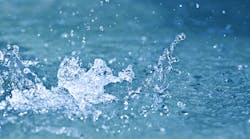SAN FRANCISCO, CA, June 7, 2012 -- The U.S. EPA's Pacific Southwest Region has launched an online "waste to biogas mapping tool" to support the use of organic waste for energy projects.
"This innovative mapping tool, the first of its kind in the nation, helps restaurants, hotels and other food waste generators to connect with large energy producers," said Jared Blumenfeld, EPA's Regional Administrator for the Pacific Southwest. "Harvesting this energy prevents waste from ending up in landfills or clogging sewer lines."
The tool is an interactive map created to link food and other biodegradable waste sources with facilities such as wastewater treatment plants that can enhance energy production with their existing infrastructure. Wastewater treatment plants and some dairies manage waste with anaerobic digesters, which produce methane-rich biogas as a natural byproduct.
By adding food scraps or fats, oils, and grease to an anaerobic digester, facilities can increase biogas production to make money while providing a renewable energy source, reducing greenhouse gas emissions. These business and environmental opportunities may present a largely unrealized potential.
The tool is designed for decision-makers with technical expertise in the fields of waste management, wastewater treatment, and renewable energy. This includes businesses, state and local governments, and non-profits. The tool allows users to determine the types of facilities in their area, where clusters are located, and the distance between a waste producer and an anaerobic digester. The tool also functions in reverse -- allowing generators of organic waste to find partner facilities that will accept it.
Features include:
* Fats, oils, and grease (FOG) hauler information for California, Arizona and Nevada
* California landfill information
* On-site energy generation for California dairies with digesters (in kilowatt hours per year)
* Energy estimates for wastewater treatment facilities, with and without co-digesting FOG (in kilowatt hours per year for California, Arizona, Nevada and Hawaii).
* A "correct record" option that allows facilities to change information presented on the map.
A study performed by the Northern California Power Agency in 2008 determined that agricultural, wastewater, and food processing wastes could be digested to obtain 453 megawatts of energy -- enough to run a utility-scale power plant while also preventing 3.7 million dry tons of organic material from ending up in a landfill. This use of biogas to displace natural gas would have a climate change abatement potential equal to taking approximately 160,000 cars off the road.
A prime example is in Millbrae, Calif. Grease is collected by a licensed material hauler, transported to the wastewater treatment facility in 3,000 to 5,000 gallon tanker trucks, and added to a FOG-condition system, where it is converted into biogas used to meet 80 percent of the facility's needs. Millbrae has increased biogas production by nearly 100 percent, reducing their utility energy bill by 75 to 80 percent, preventing some 589 tons of green house gas from being emitted into the atmosphere annually, and reducing annual dewatered bio-solids hauling by 35 percent.
Wastewater treatment plants in the region's four Pacific Southwest states are co-digesting more than FOG. Organic materials -- including food waste, yard trimmings, soiled paper, and green waste -- comprise two-thirds of the solid waste stream. According to the East Bay Municipal Utility District (EBMUD), food waste has up to three times as much energy production potential as biosolids. An EBMUD demonstration project indicated that 100 tons of food waste digested per day produces enough energy to power up to 1,400 homes.
Financial assistance provided by federal, state, and private sources can make on-site generation affordable and practical. The federal government provides grants, loans, and rebates. State agencies also provide grants, loans, rebates, renewable credits, and stand-by rates for energy generation. Local utility districts provide private sources of funding as do private third-party leasing arrangements and pooled bond financing.
The mapping tool is found at: www.epa.gov/region9/biogas .
More information about co-digestion and funding sources is found at: www.epa.gov/region09/waterinfrastructure/funding.html


